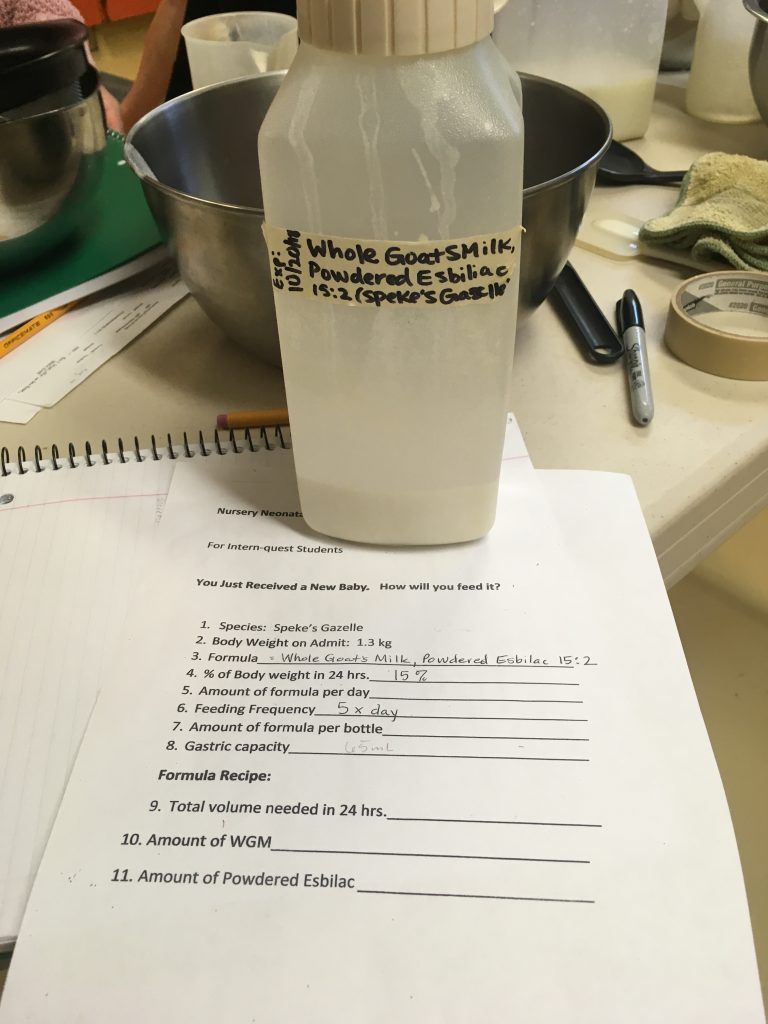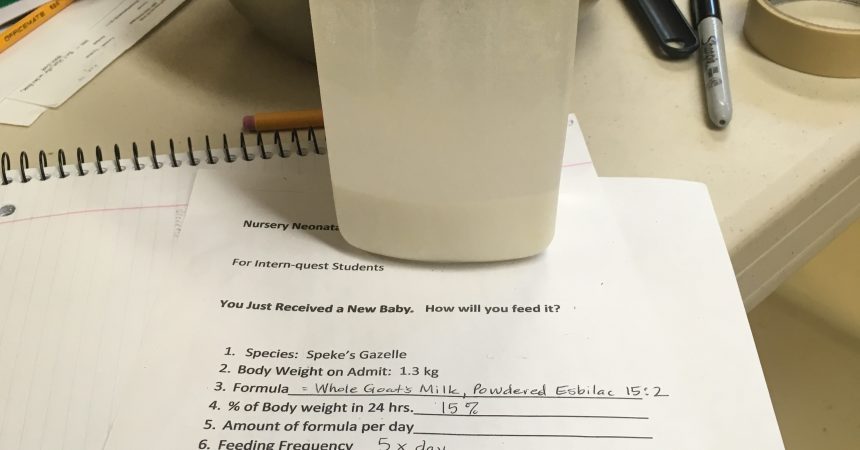Zoo InternQuest is a seven-week career exploration program for San Diego County high school juniors and seniors. Students have the opportunity to meet professionals working for the San Diego Zoo, Safari Park, and Institute for Conservation Research, learn about their jobs, and then blog about their experience online. Follow their adventures here on the Zoo’s website!
 What does it take to help baby animals in need? This week, we had the opportunity to meet Kim Weibel, who is one of five members of the Neonatal Assisted Care Unit, or NACU. The NACU helps care for baby animals who either need more care due to medical issues or whose mother cannot or will not provide the necessary care for survival. It takes a lot of flexibility and patience to care for these animals since they may require it at any time. One animal that Ms. Weibel and her coworkers have been highly involved with is the giant panda, so here’s a bit more about China’s beloved bear.
What does it take to help baby animals in need? This week, we had the opportunity to meet Kim Weibel, who is one of five members of the Neonatal Assisted Care Unit, or NACU. The NACU helps care for baby animals who either need more care due to medical issues or whose mother cannot or will not provide the necessary care for survival. It takes a lot of flexibility and patience to care for these animals since they may require it at any time. One animal that Ms. Weibel and her coworkers have been highly involved with is the giant panda, so here’s a bit more about China’s beloved bear.
Native to China, giant pandas are somewhat solitary animals, except for mothers with cubs and during mating season. A giant panda’s diet in the wild consists mainly of bamboo, although they are known to eat bulbs, fruits, and even carcasses. However, pandas need more than just bamboo to survive. Their ideal habitat is an old-growth conifer forest, with at least two species of bamboo and a source of water. Their home ranges are thought to be about 1.9 square miles, although they may be larger in areas where bamboo is not as abundant.
Unfortunately, only just over 1,800 pandas remain, and they are categorized as vulnerable by the International Union for Conservation of Nature. This is due to habitat destruction, since their native China is also home to over a billion people. Roads, homes, and other infrastructure have fragmented panda habitat into isolated islands that these bears cannot move between without crossing highways or other human communities. This habitat fragmentation puts pandas in areas where bamboo is limited, as well as contact with other pandas. Pandas have a very low reproductive rate and a short breeding season, producing only one cub that is very dependent on its mother for the first two years of its life. In the wild, the mother typically favors one cub and abandons the other if she has twins.
So, how does the NACU help pandas? Ms. Weibel and some of her coworkers went to China to help hand raise twin cubs to ensure that they would survive to adulthood. Known as tandem rearing, twins are swapped between their mother and being hand raised every few days so that both twins get their mother’s milk and social skills. By using this technique, panda cub survival rates have increased to 95%.
In addition to breeding efforts, zoos worldwide have begun to collect behavioral and physiological data from pandas residing in managed care. This data builds the foundation for a better understanding of giant panda behavior, which allows researchers to better understand their needs in the wild. Additionally, GPS tracking technology is used to get a better understanding of wild panda ranges. Advanced pregnancy diagnosis, a milk formula developed specifically for pandas, and the tandem rearing technique described earlier have also contributed to panda conservation by raising the survival rates of cubs. China has also created 65 panda reserves that protect habitat from further development. These reserves are connected by natural corridors, which keep the populations of pandas together. In 2010, the captive panda population reached 300 animals, which is the population size needed to ensure genetic diversity for the next 100 years.
Now, more panda cubs are surviving, the remaining habitat is being protected from further fragmentation, and research is being conducted to better understand their needs in the wild. Overall, the panda population is improving thanks to the efforts of many, including the San Diego Zoo’s NACU.
Kelsey, Species Spotlight Team
Week Three, Fall Session 2018


